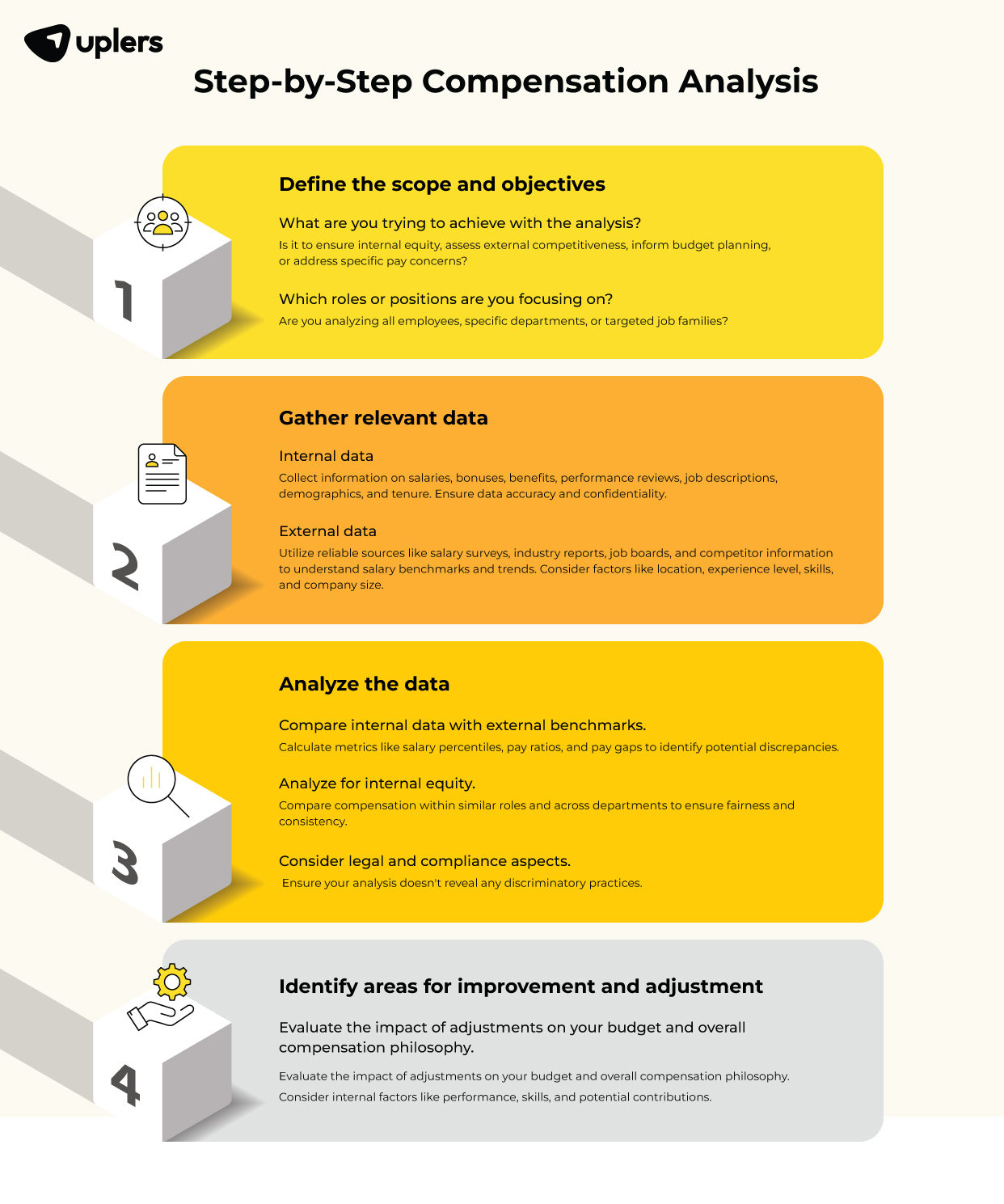Overcoming Employee Retention Challenges with Strategic [+Compensation Analysis & Real-Time Data]
- Ayushi Awasthi
- February 28, 2024
- 4 Minute Read
![Overcoming Employee Retention Challenges with Strategic [+Compensation Analysis & Real-Time Data]](https://www.uplers.com/wp-content/uploads/2024/02/unnamed-2.jpg)
Talent sourcing and retention are the topmost priorities of fast-paced companies in 2024. As organizations and potential employees increasingly evaluate dynamics around compensation, improving pay equity is emerging as a crucial focal point in the essential hiring process.
On one hand, attracting the right talent, retaining employees, and ensuring pay equity receive significant attention. On the other hand, the increasing talent shortage in the tech industry is creating a highly competitive space, compelling employers to retain their top talent to sustain their workforce and operations.
To prove this point, here are some stats-
- 77% of employers globally are struggling to fill job vacancies.
- According to ManpowerGroup, 87% of U.S. employers list talent shortages as a major challenge in 2023.
- Companies with non-competitive compensation packages are 34% more likely to lose top candidates.
- As per the LinkedIn survey, top performers are 2x more likely to leave for a 10% pay increase.
While organizations can choose to align with employees’ pay expectations, employers and decision-makers are confronted with notable margin pressures, managing the consequences of slowed market growth. Bootstrapped and mid-sized growth companies, in particular, are finding it challenging to meet pay-equity criteria. To get rid of employee retention challenges, companies need to integrate compensation analysis into their hiring practices.
What Issues Global Companies Face In Retaining Employees [ + in Terms of Compensation Challenges]
Attracting and retaining top talent is a critical battle companies are actively fighting. However, many lose this fight due to employee turnover, which can be costly and detrimental. Let’s delve into the common reasons employees leave and the impact it has, highlighting the importance of proactive solutions.

Pay inequity
A 2023 study by SHRM found that 52% of employees who leave their jobs cite unfair compensation as a reason. Pay inequity refers to the disparities in compensation among employees performing similar roles within an organization. This challenge arises when there are unjust differences in pay based on factors such as gender, race, or other non-performance-related criteria.
Lack of transparency
A 2022 report by Glassdoor found that 64% of employees would be more likely to stay with their company if they knew the salary range for their position. Lack of transparency in compensation benchmarking analysis occurs when employees are unclear about how their pay is determined. This may lead to dissatisfaction and frustration, as employees desire openness about the factors influencing their compensation.
Market competitiveness
The “Great Resignation” of 2021-2022 highlighted the importance of competitive compensation, with many employees leaving for better-paying opportunities. Market competitiveness relates to aligning an organization’s compensation packages with industry standards. If an organization’s pay rates fall below the industry average, it can struggle to attract and retain top talent.
Inconsistent compensation practices
A 2021 survey by PayScale found that 39% of employees believe their company rewards high performers inconsistently. Inconsistent compensation practices occur when there is a lack of uniformity in how KPIs, incentives, and bonuses are determined across different departments or levels within an organization. This can lead to feelings of inequity and demotivation among employees.
Non-competitive benefits
This refers to the absence or inadequacy of additional perks beyond salary, such as healthcare, retirement plans, or professional development opportunities. More benefits can contribute to employee satisfaction and a higher likelihood of seeking alternative employment.
For instance, A company offers a limited health insurance plan with high deductibles, pushing employees to prioritize cost over necessary medical care.
Addressing these challenges requires a holistic approach that considers not only compensation but also factors like company culture, career development opportunities, and work-life balance.
Empower Your Hiring Decisions With Data-Driven Salary Analysis
Explore NowWhy Compensation Analysis Matters in Retaining Global Talent?
Compensation analysis is the process of looking at how a company pays its employees. It involves checking if the salaries, bonuses, and benefits are fair, competitive, and aligned with the company’s goals. The goal is to ensure employees are well-paid and motivated and to fix any issues or imbalances in the compensation structure.
Having fair and attractive compensation programs is crucial for keeping employees around. With many people changing jobs or leaving work altogether, it’s important to focus on retention.
Studies show that 55% of employees leave for better-paying jobs. Competitive pay directly links to higher retention rates.
For instance, increasing hourly wages by just a dollar led to a 2.8% increase in employee retention, while a dollar-per-hour pay cut resulted in a 28% higher turnover.
Benefits of integrating compensation analysis into employee retention strategies-
- Recognizes and rectifies pay disparities for an inclusive workplace.
- Identifies and addresses gender or role-based pay gaps through salary compensation analysis.
- Aligns pay practices with industry benchmarks for competitiveness.
- Builds a positive employer brand with fair compensation practices.
- Proactively addressing compensation issues saves on recruitment and training costs.
Conduct Comprehensive Compensation Analysis [ + Step-by-Step]
Here’s a detailed breakdown and some additional points to consider for a better market compensation analysis:

PRO TIP:
Check out the salary calculator one of the best compensation analysis software to see the average pay for specific jobs in different locations. Salary calculators can provide snapshots of average salaries for specific roles and locations. Use them to get a general sense of market competitiveness and identify potential outliers within your internal data. Some calculators offer charts and graphs to present trends visually. This can be helpful for the initial communication of findings. They are widely available online and often free to use, making them readily accessible to anyone.
Final Insights: Transparent Compensation Analysis Is Key
Over 65% of hiring managers actively seek data-backed compensation analysis tool to enhance the efficiency of their hiring processes. As an AI-driven hiring platform, Uplers is enthusiastic about aiding these decision-makers in making well-informed choices through comparative market analysis, providing insights into global salary benchmarks.
The utility of employee compensation analysis extends beyond identifying suitable candidates for hiring managers; it also equips them with substantial data to refine strategies, contributing to overall cost-effectiveness for the company. This tool, along with essential guides, is especially valuable for organizations hesitant to adopt a global approach to hiring.

Thank you for submitting the details!
We will keep your information safe. Feel free to contact us with any questions at hello@uplers.com
Please check your email for next steps shared by Robert.

















